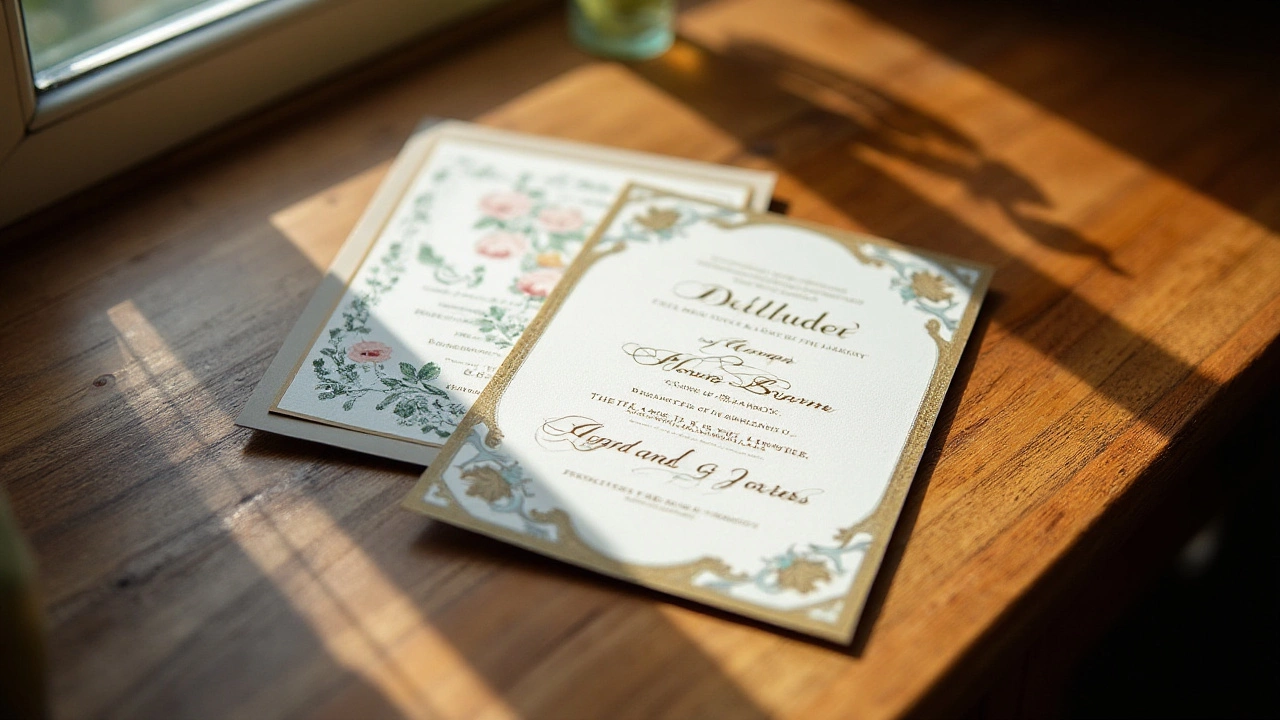Invitation Traditions: Classic Tips for Modern Weddings
When you start planning your Bristol wedding, the first thing most couples think about is the invitation. It’s more than a piece of paper – it’s the first glimpse guests get of your day. Knowing the traditions behind invites helps you keep things respectful, saves money, and avoids awkward moments.
Most people wonder: what does the "V" in RSVP actually stand for? It’s short for the French phrase "répondez s’il vous plaît," which simply means "please respond." Using RSVP the right way lets you lock down headcounts, avoid wasted meals, and keep vendors happy.
Why Tradition Still Matters
Invitation traditions have been around for centuries. They were originally a way to show respect to the guests and the families involved. Today, they still signal that you care about your guests’ time and comfort. Simple customs like including a response card, a clear deadline, and a polite thank‑you note go a long way.
Budget‑wise, tradition can actually save you cash. For example, ordering a set of 100 invites (including cards, envelopes, and RSVP cards) usually costs less per piece than buying them individually. Our guide on the Cost of 100 Wedding Invitations breaks down exact numbers, so you know what to expect.
Modern Twists on Classic Invites
While you want to respect tradition, you can still put a personal spin on it. Digital RSVP options are now accepted at many venues, but a paper response still feels special for older relatives. If you love bold colors, choose a classic white envelope with a bright liner – it keeps the look timeless while adding a pop.
Another modern idea is a “save‑the‑date” card that mirrors the main invite design. It gives guests a heads‑up and sets the tone early. Just make sure the wording stays polite: "We’d love for you to join us on…" rather than demanding attendance.
When it comes to wording, keep it clear and concise. List the ceremony time, reception location, and dress code in plain language. Avoid fancy fonts that are hard to read – legibility beats style every time.
Remember the envelope etiquette too. The return address goes on the top left, the guest’s name in the center, and your return address (or that of your wedding planner) on the back flap. This tiny detail shows you’ve paid attention to the little things.
Finally, don’t forget thank‑you cards. Sending them within a month of the wedding closes the invitation loop and keeps relationships strong. A quick note that mentions the specific gift feels thoughtful without being over the top.
By blending the old with the new, you’ll create invites that honor tradition, stay on budget, and reflect your personality. Use our tag page to explore articles on invitation costs, RSVP meaning, and creative stationery ideas – all tailored for Bristol couples ready to say “I do.”
Whose Name Comes First on Wedding Invitations?
Deciding whose name should appear first on a wedding invitation is not just about etiquette, but also personal preference. Traditionally, the bride's name appears before the groom's, reflecting historical customs. However, modern sensibilities and varying family dynamics often influence this choice today. Couples should consider both tradition and what feels right for them when making this decision.
View More